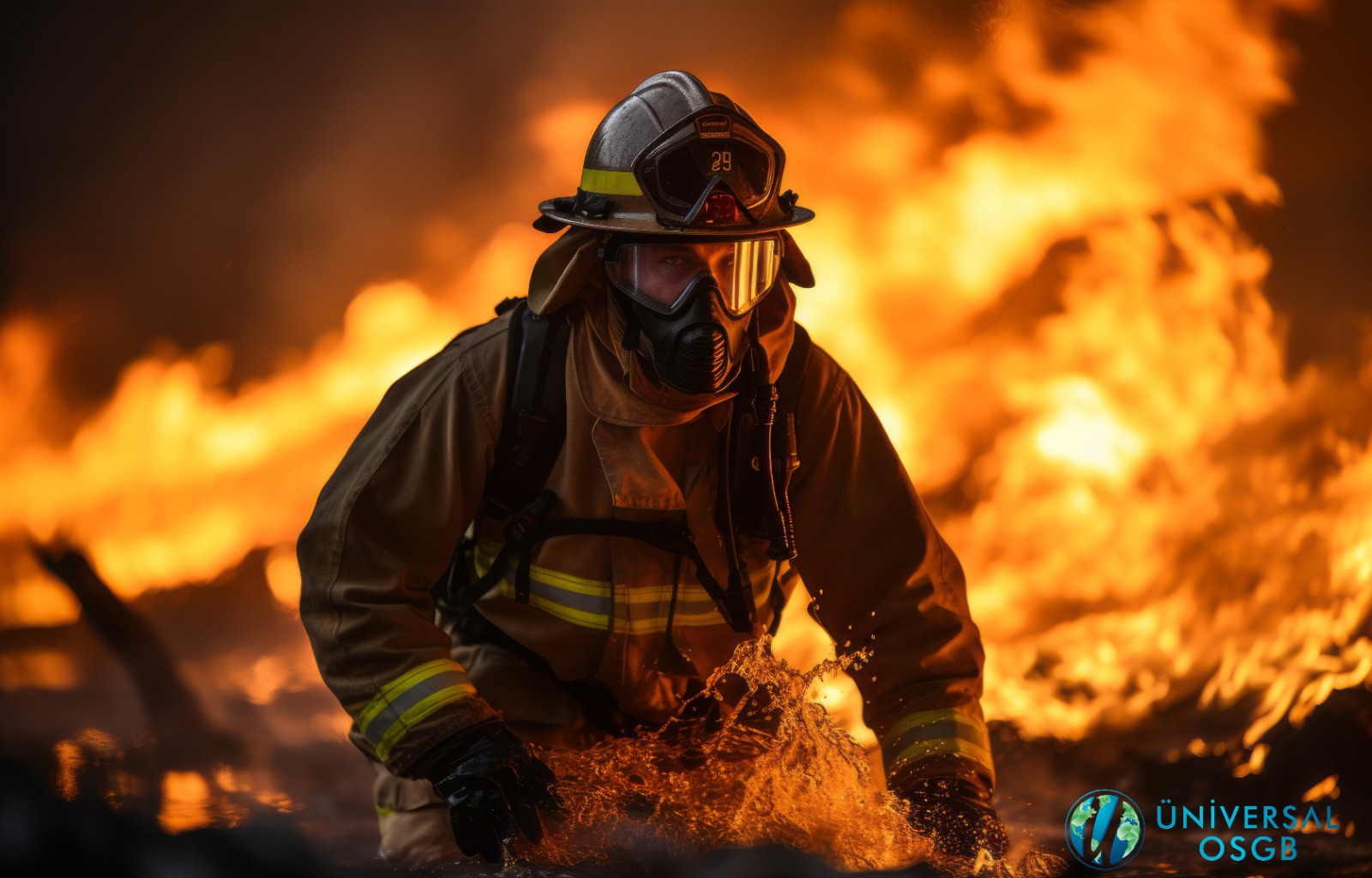
Burn Risk in the Workplace, Precautions and First Aid
The risk of burns in workplaces poses a significant threat, especially in environments where dangerous elements such as chemicals, high heat, electricity, steam and open flames are present. Burns are injuries that require urgent medical attention both in the short term and can lead to serious health problems in the long term. In this article, we will focus on the risks of burns at work, protection measures and first aid interventions that should be performed in case of burns.
Types of Burns and Risks Encountered in Workplaces
- Thermal Burns: Occur as a result of contact with flames, hot surfaces or liquids. It is common in workplaces where high heat is exposed, such as factories, kitchens, welding workshops.
- Chemical Burns: Occur as a result of contact with acids, alkalis or other dangerous chemicals. It can be encountered in chemical production facilities, laboratories and industrial enterprises.
- Electrical Burns: Occur as a result of exposure to electric current. Electrical installation carries risks for people working in maintenance and repair jobs.
- Radiation Burns: They occur from radiation sources such as the sun, radiation or laser. Welding work, those who work in the radiation field or those who work under the sun for a long time may be exposed to such burns.
Preventive Measures
The measures to be taken at work to minimize the risks of burns should be part of the occupational safety policies and all employees should be made aware of this issue.
- Use of Personal Protective Equipment (PPE):
- PPE such as heat-resistant clothing, gloves and face protectors reduce the risk of thermal burns.
- Chemical resistant gowns, gloves and glasses prevent exposure to chemical substances.
- Insulating gloves and shoes provide protection against electric shock and electrical burns.
- Protocols for Working with Chemical Substances:
- Appropriate ventilation systems and trainings on hazardous substances should be provided in areas where chemical substances are used.
- Chemicals should be stored in secure cabinets and their containers should not be left open.
- Employees should be made aware of how to use the substances and what to do in case of spillage.
- Fire Safety:
- Fire extinguishing devices should always be accessible at workplaces against the risk of fire outbreak, and personnel should receive training on how to use these devices.
- Emergency exit routes should be obvious, exercises should be organized for rapid evacuation in case of fire.
- Electrical Safety:
- Personnel working in electrical works must be competent and work in accordance with occupational safety rules.
- Electrical equipment should be checked regularly, and damaged equipment should not be used.
First Aid in Case of Burns
Burns may require different interventions depending on the degree. First aid in case of burns varies depending on the severity of the injury. Emergency intervention for burns that occur at work can greatly affect the extent of the injury and the person's recovery process.
- Understanding the Degrees of Burns:
- 1. Degree Burns: Only the upper layer of the skin is affected. There will be redness and slight swelling.
- 2. Degree Burns: Both the upper and lower layer of the skin are affected. Severe pain, blisters and swelling occur.
- 3. Degree Burns: The skin and subcutaneous tissues are completely damaged. White, brown or charred skin appears, and the pain may decrease, because the nerves may be damaged.
- General First Aid Steps in Case of Burns:
- Move the person away from the source of the burn: For electrical burns, it is a priority to cut off the current first, and for chemical burns, it is also a priority to stop the source of the chemical substance.
- Cool the burn area: The burn area should be kept in cold water immediately (about 10-20 minutes), this reduces the burning on the skin and can limit tissue damage.
- For chemical burns, wash with water: If a chemical substance has come into contact with the skin, it should be washed off with plenty of water and immediately intervened to neutralize the chemical substance. If clothes have come into contact with chemicals, they should be removed immediately.
- Cover the burn area with a sterile cloth: Cover the burn area with a clean, dry cloth to protect it from the risk of infection.Jul.
- Give painkillers: Painkillers can be given with the advice of a doctor against pain. However, any cream or oil that will increase the risk of infection should not be applied to the burn area.
- Call for emergency help: If the burn looks serious, emergency medical attention should be called immediately.
- First Aid According to Specific Types of Burns:
- For Chemical Burns: Rinsing with plenty of water is the first step. If the chemical has come into contact with the eyes, the eyes should be washed immediately and medical attention should be sought urgently.
- In case of Electrical Burns: Since there may be life hazards such as cardiac arrest as a result of electric shock, basic life support (heart massage) should be applied to the person first.
- Post-Burn Care:
- Since the risk of infection is high during the healing process of burns, the burn area should be kept sterile and the treatment method recommended by the doctor should be applied.
- 2. and 3. severe burns require medical attention. In such cases, it is critically important to seek professional help and follow the necessary care process.
Measures to be taken to minimize the risk of burns at workplaces both increase the safety of employees and prevent serious accidents. Quick and accurate interventions in the case of burns can speed up the person's recovery process and prevent more serious injuries. While training, the use of protective equipment and regular safety inspections significantly reduce the risk of burns, it is also vital that employees receive first aid training at work.
Üniversal OSGB
Occupational Safety and Worker Health Center


